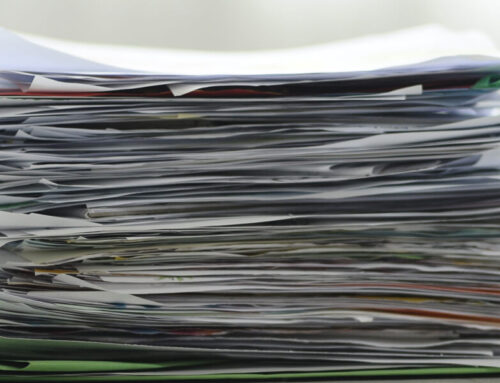According to the University of Denver’s report, “Quality Judges Initiative FAQ – Judges in the United States,” there are approximately 30,000 state court judges that deal with the 100 million state court cases that are filed annually. At the federal level, approximately 1,700 judges handle the 400,000 federal court cases filed each year.
Regardless of how each case is ultimately dealt with or adjudicated, that is a tremendous caseload that in some manner must be processed through the maze of Clerk of Court offices at the municipal, state and federal levels throughout the U.S. each year.
Among the many important responsibilities of each Clerk of Court office is that of making constituent disbursement payments for things such as jury duty, restitution, witness fees, bail, child support, and more.
How prevalent is check fraud?
No matter how you slice it, that’s a lot of payments, with many involving the use of paper checks. And check payments bring with them a major issue – check fraud.
Given the fact that check fraud, which comes in all types of forms, is actually the second most prevalent type of bank fraud (accounting for 35-percent of all bank fraud), it’s fair to say this is a major concern for Clerk of Court offices.
How much of a concern is check fraud for your court?
For the sake of context, it’s estimated that approximately 1.2 million bad checks get processed daily. In fact, Ernst & Young estimates that 500 million checks are forged every year.
Add in the fact that 74-percent of organizations have experienced check fraud, it’s a fair assumption that many Court of Clerk offices across the country fall victim to this crime each year.
“No matter how many checks your office writes, what is clear is that the more checks you process, the higher the probability your court will fall victim to check fraud.”
The enormous cost of check fraud
So, what’s the cost of check fraud for an average Clerk of Court office?
It’s estimated that small businesses in the U.S. with $5 million or more in annual revenue write more than 1,100 paper checks per year, which breaks down to an average of 4.4 per day.
What about your own court? Do you use paper check disbursement as your primary source of payments? If so, does 4.4 checks written per day sound like a lot compared with what your office normally processes? Consider that your office probably provides checks to constituents for everything from jury duty and restitution to child support, witnesses and bail. There’s a very good chance your office cuts considerably more checks daily and annually.
No matter how many checks your office writes, what is clear is that the more checks you process, the higher the probability your court will fall victim to check fraud. Ernst & Young pegs annual losses at $10 billion, so the financial pain to your organization could be huge.
The political cost of check fraud
There is another type of cost when it comes to organizations that rely on public funding. Proper stewardship of taxpayer dollars is no small matter. Potential political costs and ramifications have to be considered when it comes to check fraud. It’s a fair bet the public will prefer that their tax dollars be spent on implementing technology that reduces or eliminates an issue like check fraud – not to do so would surely be viewed as wasteful.
Taking action to prevent check fraud
There are several steps your office can take to help stem the issues and impact of check fraud. Instituting controls, limiting signing privileges, monitoring your check stock, and adopting strict reconciliation processes are but a few of the things you can do to proactively address potential check fraud internally.
That said, no matter what internal measures you take, paper check disbursements will continue to leave your office vulnerable to threats of all types that can wreak serious havoc on your operations.
One example is that of the Superior Court of Clayton County, Georgia. The court was victimized by a perpetrator who had recently served jury duty. The Clerk of Court’s office described the situation in this manner, “Our checking account fell victim to fraudulent checks totaling thousands of dollars masterminded by a juror who had received a paper check from us.”
Bottom line, when relying on paper checks to make disbursement payments within your organization, you are always going to be susceptible to check fraud. The only way you can significantly reduce that threat is to switch to a digital disbursement system that largely eliminates the use of paper checks.
“Proper stewardship of taxpayer dollars is no small matter. Potential political costs and ramifications have to be considered when it comes to check fraud. It’s a fair bet the public will prefer that their tax dollars be spent on implementing technology that reduces or eliminates an issue like check fraud – not to do so would surely be viewed as wasteful.”
Get proactive
Learn more about how CourtFunds can help your state, county, or municipality proactively prevent check fraud. Schedule a demo with one of our payment technology experts.





